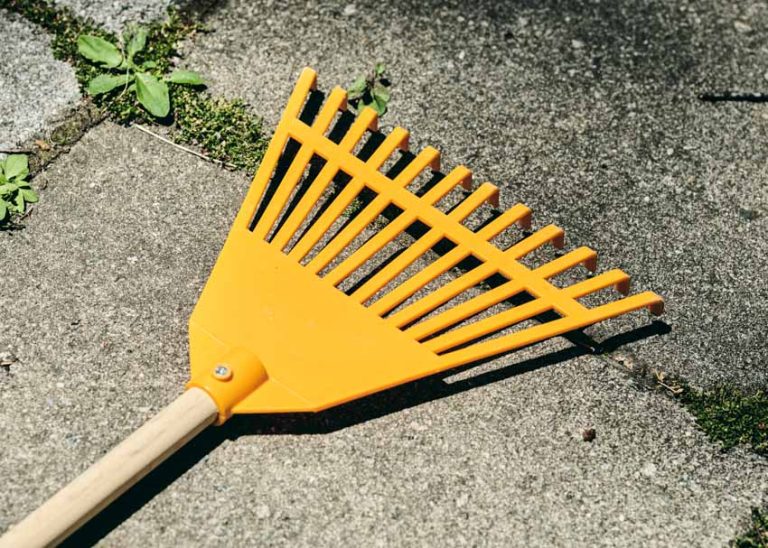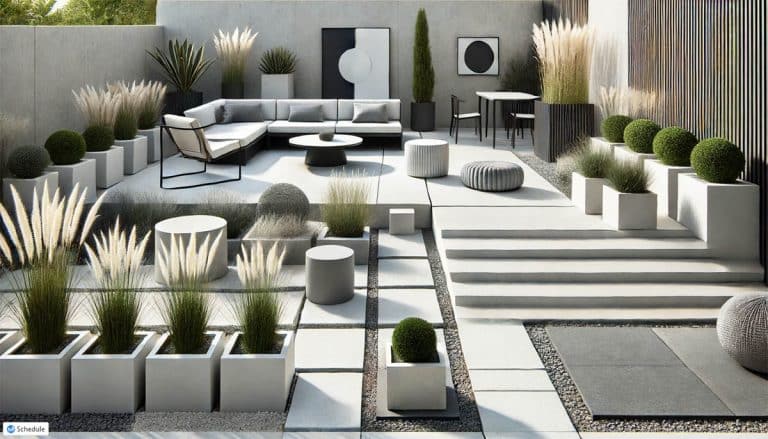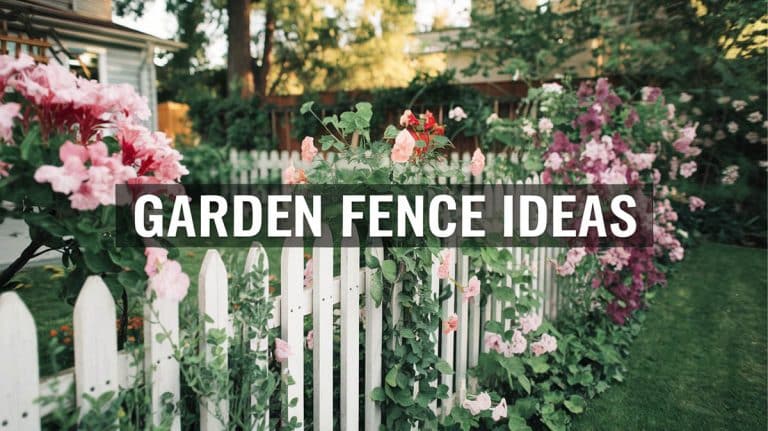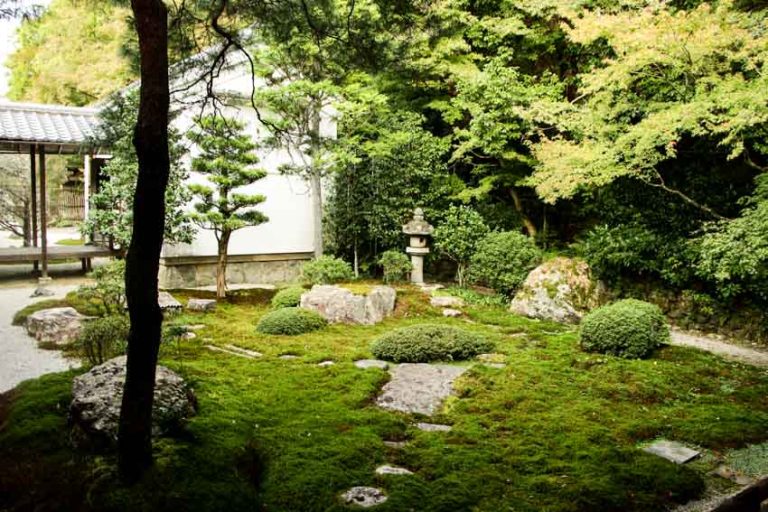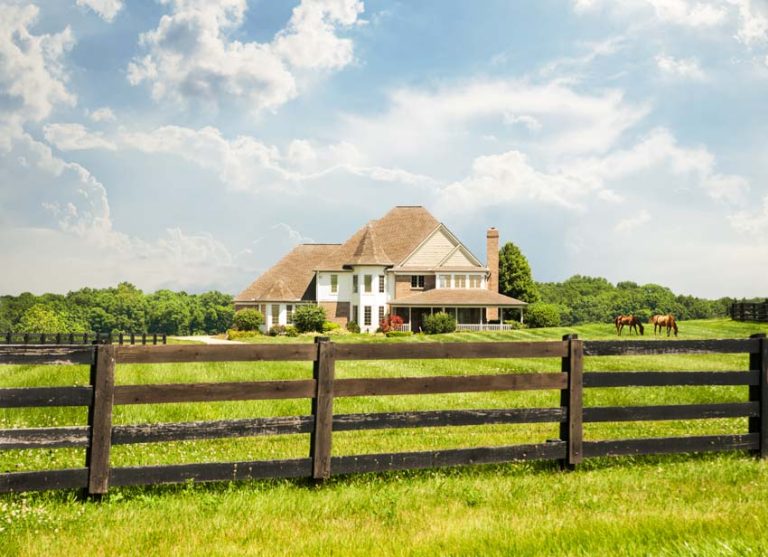How to Fix a Muddy Yard (Prevent Water Build-Up Tips)

A lovely yard requires a lot of upkeep. You will need to get your hands filthy now and again if you want that green piece of land to look its best. One of the numerous drawbacks of a muddy yard is that it damages your grass. Excessive water in the soil overwhelms your grassroots, leaving them susceptible to illnesses like fungus. It may also result in a flooded home, mainly if your house is on the lower side of the yard.
Many are perplexed as to how to deal with a muddy yard. It might be an issue with your drainage pipes, or it could be a pair of hyperactive dogs running about in your yard. Regardless of the problem, drying and repairing the muddy yard is necessary. Fortunately, some remedies are transitory, while others are long-term. So, how do you fix and dry up a wet yard?
What Causes Muddy Yards
Here’s why your yard is always muddy, damp, or soggy:
Poor Landscape Design And Drainage
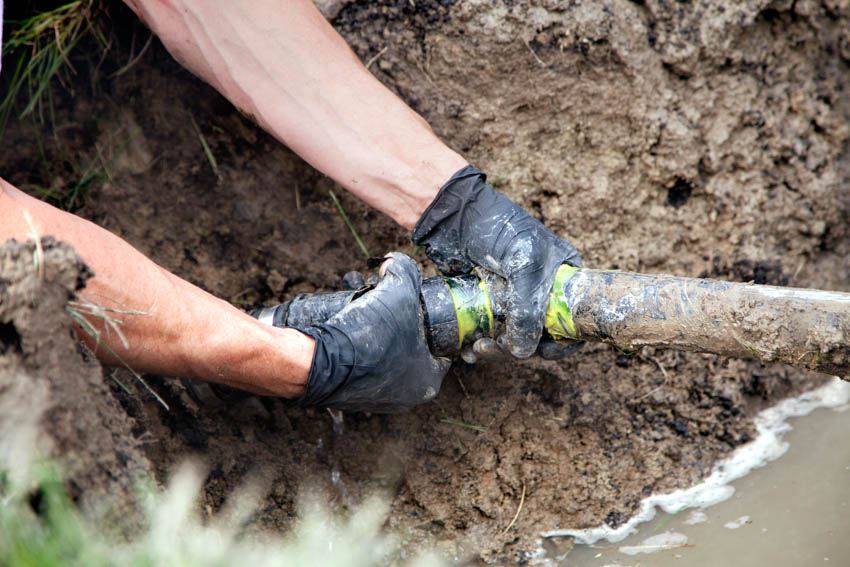
Suppose you hurriedly put together a landscape plan without first learning about the natural order of the land surrounding your home. In that case, you may have unintentionally caused a drainage problem.
No matter how little water you give your plants, water will always pool around them. Because by carelessly arranging your flower beds in a specific location, you may have obstructed the natural flow of water or stopped the water from flowing where it should.
Poor drainage is the usual culprit of a wet lawn. Check to see whether the downspouts are directing the water into a drainage ditch or other low-lying area.
Landscaping and grass leveling may be a long-term solution to a flooded yard.
Trails For dogs
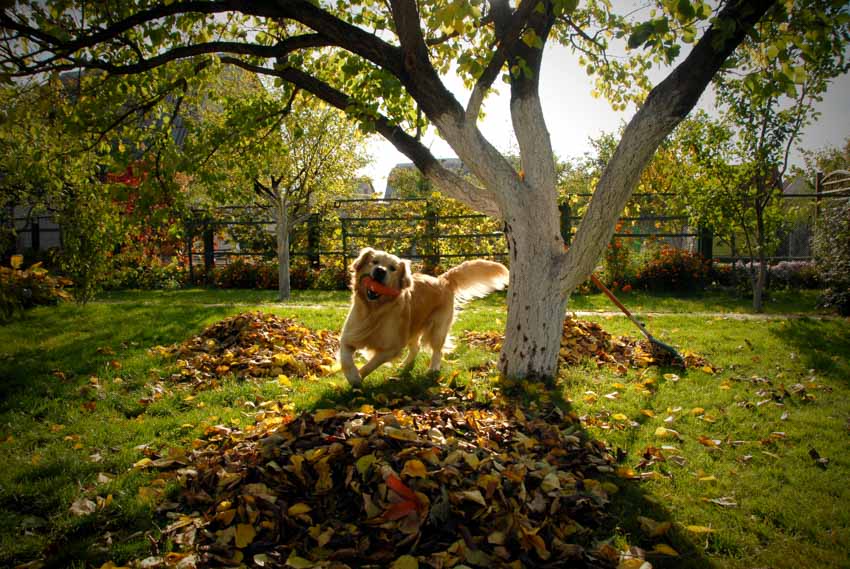
In the house, dogs do not follow defined routes. Instead, they choose the quickest path between two points. Dogs produce tracks that go from muddy regions to grass or wet areas to mud when their feet mix the moisture with the soil. A muddy yard caused by dog tracks isn’t as bad as floods, for example, and presents a lesser problem.
Water Traps
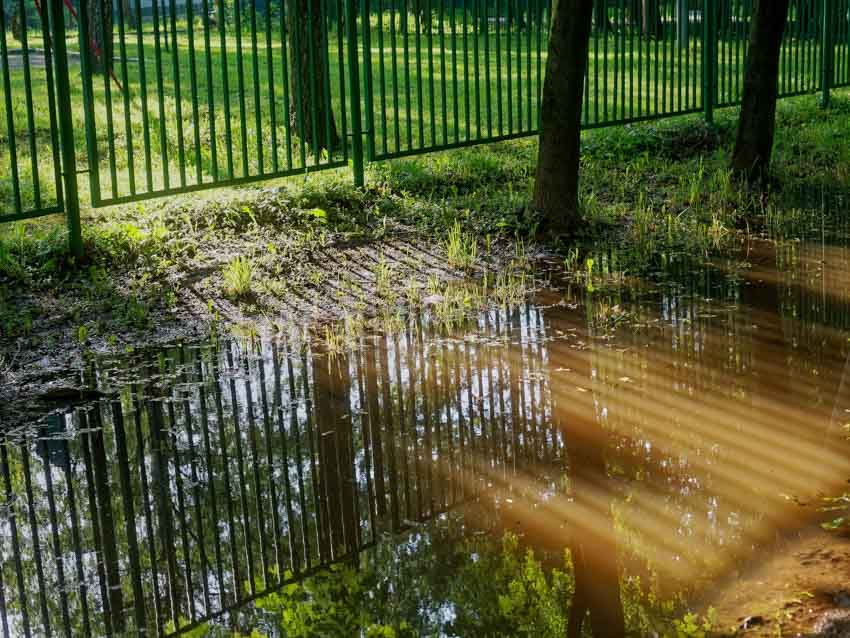
You may see that water is collecting in strange places throughout your muddy garden because of the improperly graded land. If you’re having difficulty understanding this idea, consider potholes on the road. These “potholes” in your backyard are filled with water, creating a swampy environment. Any plant life you try to cultivate in these places would perish due to standing, stagnant water.
If you reside near a lake or a river, and you find the ground becoming wetter over time, the water levels in that region are likely increasing, resulting in a soggy lawn that’s difficult to dry.
However, it would be best to rule out the possibility that the moisture is due to soil compaction, inadequate drainage, or another factor.
Poor Elevation
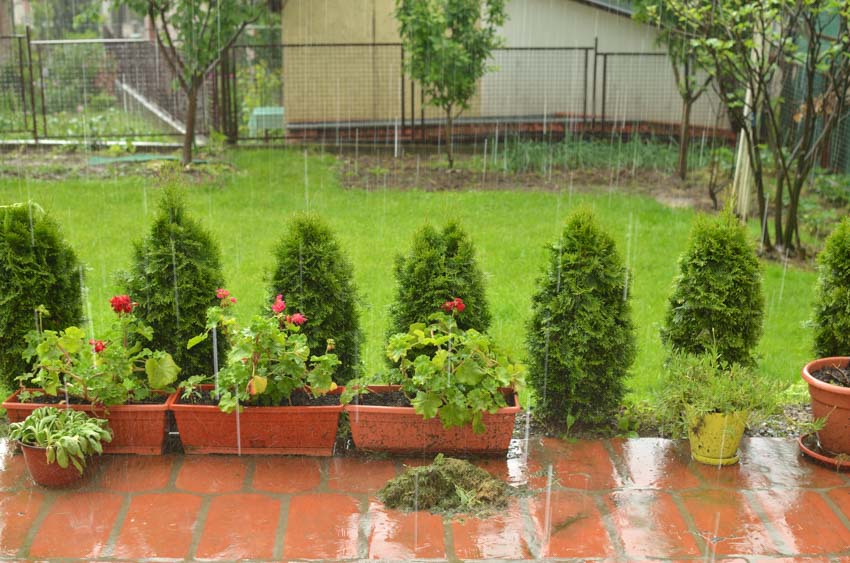
Have you seen how water accumulates and collects around your house’s foundation? Poor elevation of your house is most likely to blame for this drainage problem. If left unattended, it will harm your home’s flooring and walls. It may even wreak havoc on your home’s foundation.
If the soil is well-aerated yet still absorbs water, it most likely has low elevation. Some areas of the yard may be lower than the rest.
Compacted Soil
When you frequently use the soil in your yard for labor or pleasure and the tiny gaps are reduced, soil compaction develops. As a consequence, the yard is drenched, sloppy, and muddy.
You may notice a greater compaction rate if your ground is from clay or loamy soil. The soil compaction or inadequate aeration causes the water not to flow away correctly.
Concrete Paved Surfaces
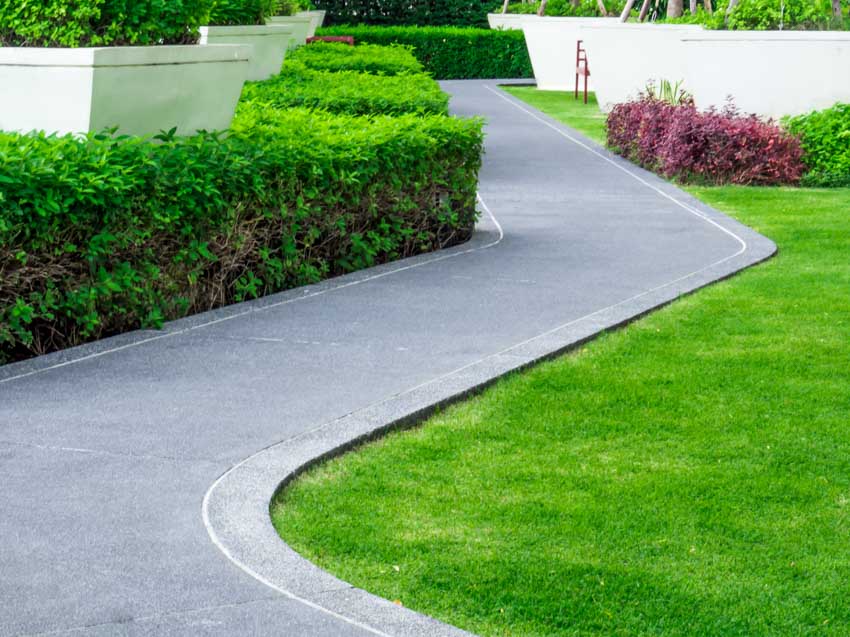
This wet problem with a concrete surface, such as driveways, is most often caused by improper concrete grading after installation. Unfortunately, the only option to fix the problem is to destroy the concrete building and start from scratch.
If you use anything other than concrete, such as paving stones, pebbles, gravel, or mulch, you will need to grade the surface where they will sit.
Downspouts From The Gutters
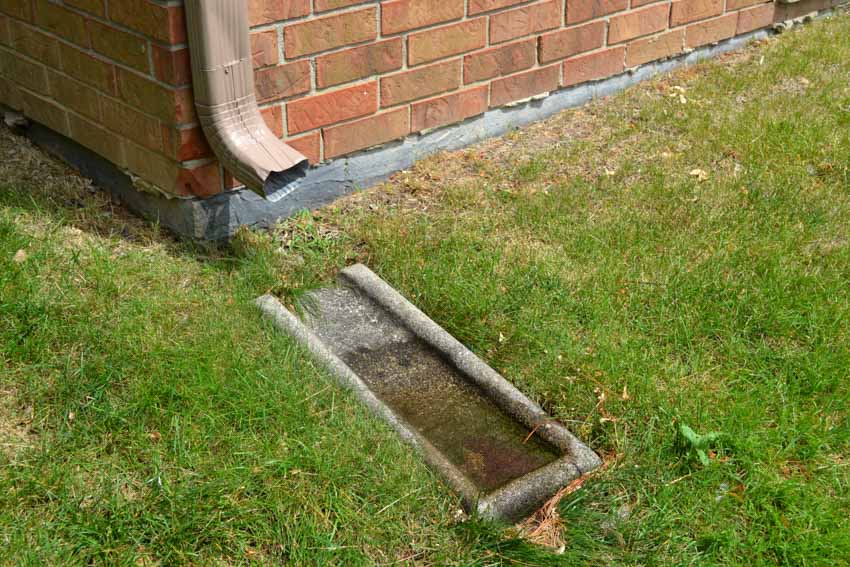
When properly maintained and cleaned, a gutter system covering the drip edges of your home’s roof is a fantastic investment. Sometimes, the downspouts may get clogged, causing water to fill the gutter trough. The gutter channel will eventually fill and overflow into your yard.
This overflow may flood a particular region, washing away the earth and soil, causing the water to gather and settle directly on top of the plants you’ve placed there.
Hardpan
Hardpan is a solid, thick subsoil that is water-resistant to a large extent. Hardpan may form naturally or as a result of construction trucks’ wheels slamming together. The hardpan may be a few inches under the topsoil, posing an issue for your yard’s drainage.
If the hardpan layer is just a few inches below the ground’s surface, water may seep through the topsoil layer and pool on top of the hardpan layer, which is only a few inches under your yard’s surface.
Steps To Fix A Muddy Yard
A muddy yard may seem to be nothing more than a giant, irritating mess, but you can transform it properly with a bit of creativity and work. Depending on the reason for the water accumulation, there are several solutions.
Install A French Drain Or Trench

The term “French drain” refers to gravel or rock-filled ditch. It also includes a pipe with holes that may divert water from the ground and keep water out of your garden as well. The French drain’s simple principle is that water will always flow downwards and choose the shortest possible path.
The water will travel through the rocks or gravel before entering the pipes. The perforated pipes may then drain far enough away to be safe. You may always install artificial grass or a covering to avoid water accumulation.
To enhance the visual appeal of the French drain, you may always bury the pipes in polished rocks. Wrap your French drain with landscape fabric. For the drainage, you should leave both ends of the tube exposed while covering it.
Elevate Or Level The Yard
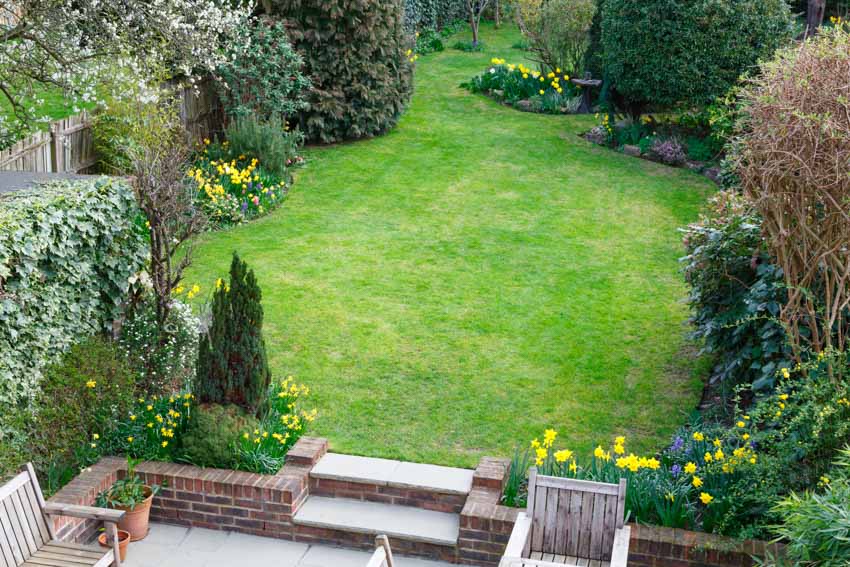
If your yard contains low-lying parts that readily absorb water when it rains or after watering, you may have a big flooding problem on your hands. Fill in the low-lying areas using a mixture of soil and fine gravel to bring them to the same level as the rest of the yard. Rebuild the whole backyard landscaping to avoid water soaking up in certain areas with a large area.
The ideal option is to slope away from the house or walkway at approximately 14 inches per foot (about 2% slope).
Repair Your Gutter Downspouts And Fix A Defective Drainage System
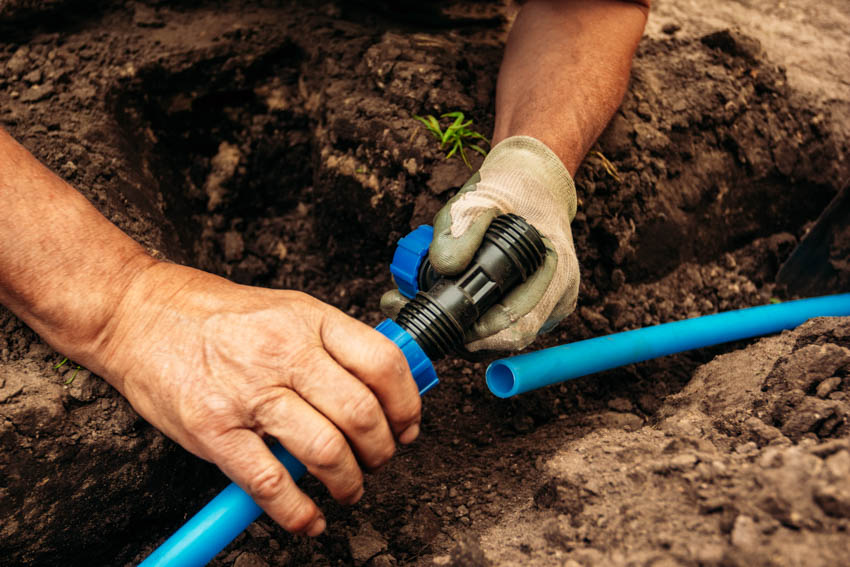
Although it may seem self-evident to most people, inadequate drainage is the leading cause of a muddy yard. Observe outside the next time it rains and look at how much water flows out of your downspout. If your yard is becoming muddy due to a clogged downspout, you must immediately repair your drainage system.
If rain runoff is causing problems, make sure the drains reach at least 6 feet beyond your foundation. Direct the downspouts to a ditch, pond, or other low-lying location outside the lawn if feasible.
To manage the runoff, make sure these drainage zones are free of plants and debris. Whether you lengthen the downspouts or not, installing a collect basin for the water is a reasonably simple option.
Aerate The Lawn
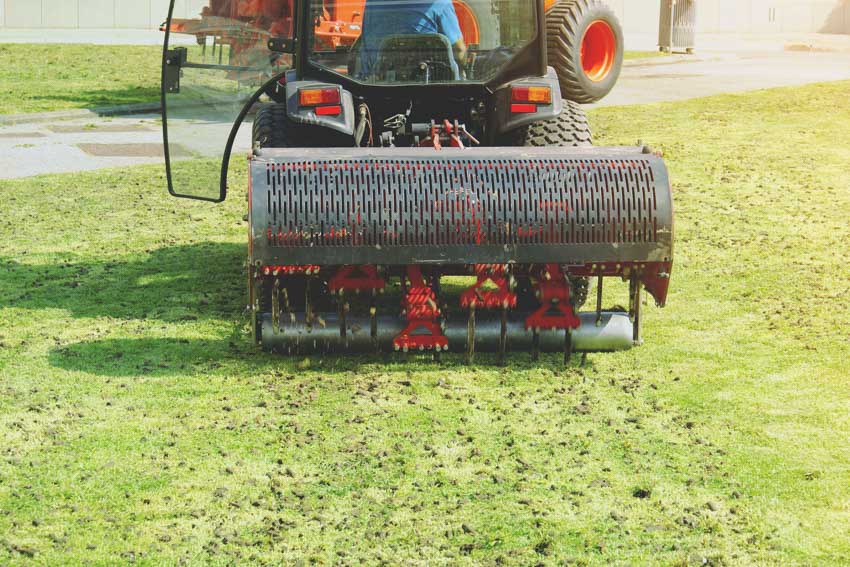
Aeration allows water to penetrate deeper instead of puddling up, making it one of the most straightforward methods when dealing with how to fix a muddy yard. It does not drive water away but aids in its drainage via the soil layers. This method works only if the water is logged in the top layers of the soil but not in the lower levels.
If you have a small yard, aerating is simple since all you have to do is poke holes in the ground using a pitchfork or a lawn aerator. The holes don’t have to be extremely deep; just about half of the pitchfork’s prongs.
Put More Organic Material In The Yard
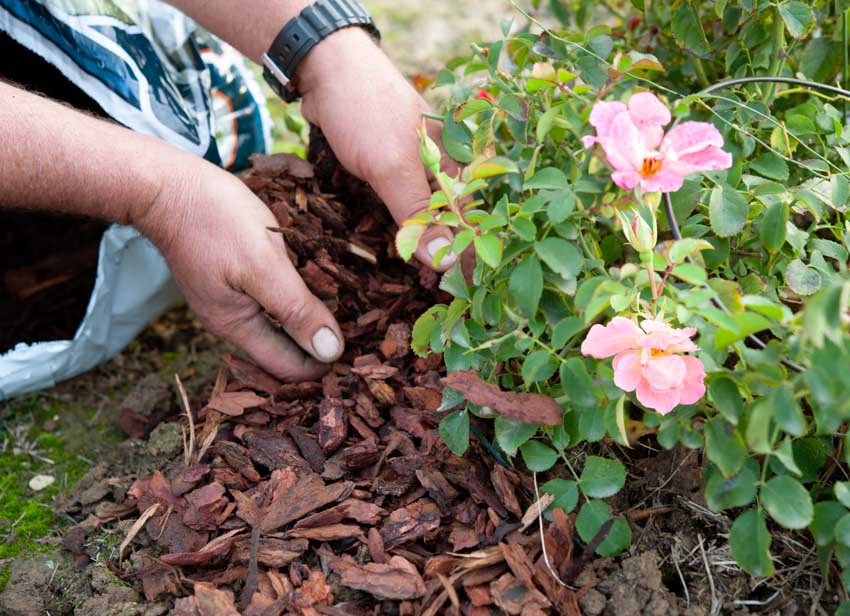
The topsoil is sometimes the primary problem since it prevents water from draining away. Mix the clay soil with a less compact substance. It loosens the ground, allowing the water to drain more easily. Other materials include peat moss, mulch, and sand.
The issue with this technique is that it will kill your plants. When you’re through, though, you will successfully eliminate the drainage problems that create muck and moisture.
Use Pine Flakes For Cover-up
Pine flakes are a fast cure for a wet yard because they absorb water rapidly. Because of their size, the shavings stay on the soil surface and are an excellent natural solution for muddy dog paths.
Gather enough pine flakes and liberally apply them to damp and wet surfaces. The pine shavings will soak up the moisture and create a layer on top of the mud.
Use A Straw To Cover The Holes
Placing straw bales in muddy areas is a quick way to get some work done or create a clear route when resolving how to fix a muddy yard. These will raise and cushion the soil just long enough for you to go through to the other side, but they won’t stay long.
Hay or straw takes a long time to dry out; therefore, it is only a temporary remedy. They are also readily blown away by the wind but an excellent mulch alternative.
Improve Your Ground Cover
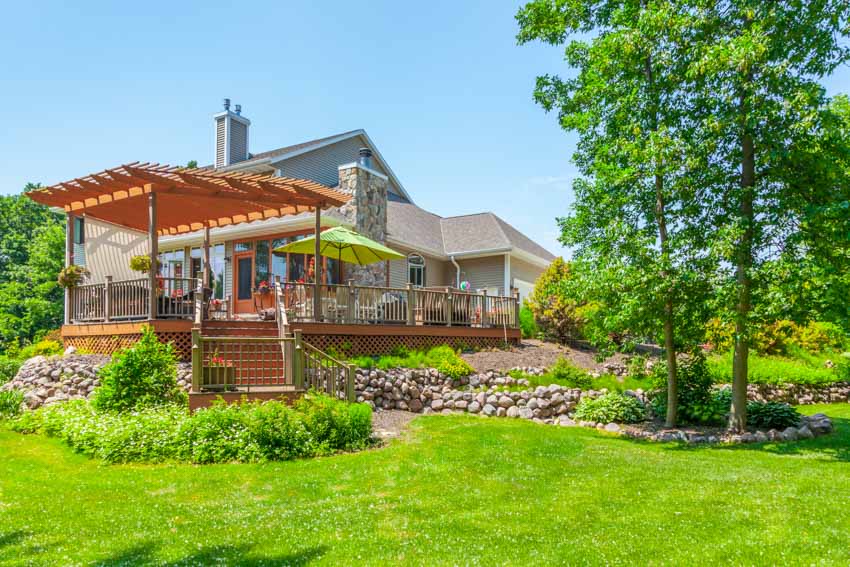
When dealing with fixing a muddy yard, you may want to touch it up with different plants and materials like wintercreeper, Irish moss, silver carpet, and clover. This will cope with the threat of dogs muddying things up.
These are stronger than regular yard grass and will provide you with more coverage, especially if you have naughty pets.
Dethatch
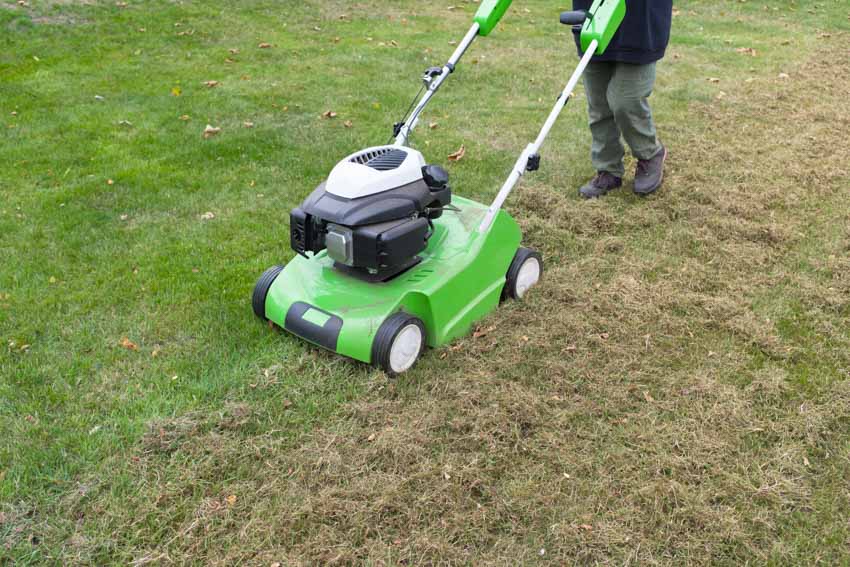
Thatch is a term used to describe tiny patches of grass that emerge from the lawn soil. Although the grass typically dies, it stays on top of the ground. Now, a little thatch is OK. However, if your grass develops an excessive quantity of thatch, it may act as a barrier between water and air, resulting in a wet yard.
The grass will begin to deteriorate as well. Dethatching is an essential gardening technique. You may use a simple rake or a dethatching mower to remove the dead stuff.
Set Up A Rain Garden
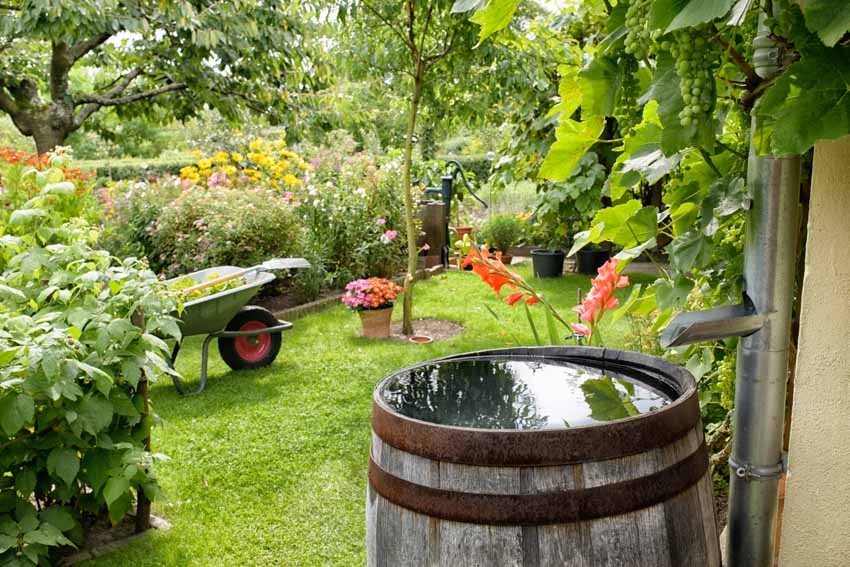
If a section of your yard is too wet to sustain grass, create a rain garden with water-tolerant plants. Make three zones in your rain garden: a moist zone at the bottom, a middle area, and a transition zone at the lawn’s border. Then, depending on their water tolerance, select plant species for each location.
Many plants, such as elderberry, swamp rose, and goldenrod can survive up to 6 inches of standing water for short periods, making them excellent wet zone options. This will help when you’re stuck with a water-logged area after heavy rainfall.
Hardscaping
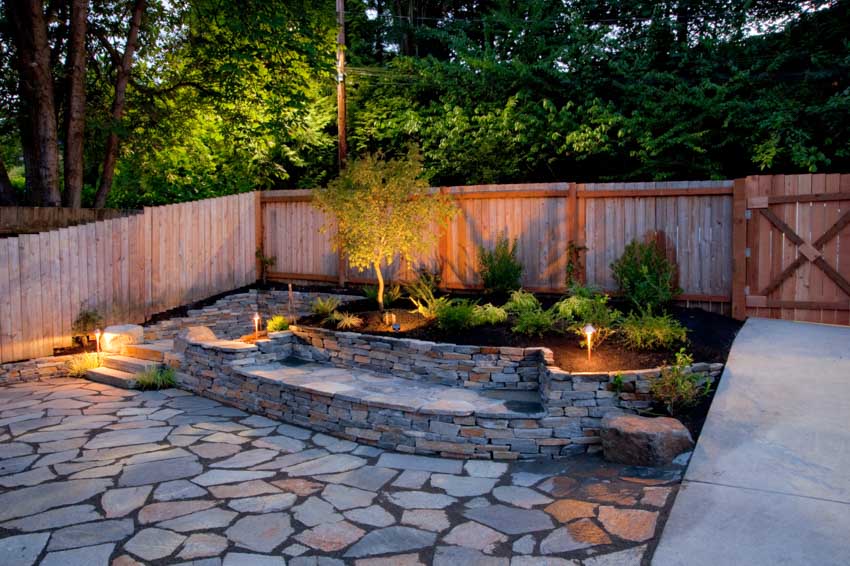
Hardscaping is creating artificial pathways in a yard or other water-prone regions. In this instance, you may construct a route across a muddy region using cement, wood, limestone, and other items. Hardscaping is an excellent option since it eliminates soggy spots in your yard forever.
If the muddy portion links two sections of your property, create a walkway made of a non-mucky material, such as gravel over landscaping fabric or flagstone.
Even in the wettest of environments, a wooden boardwalk will keep your feet dry, and it is simpler to construct than a concrete path. When it rains, you may build a patio, gazebo, or other roof types to keep the site dry.
Use Gravel Or Crushed Limestone
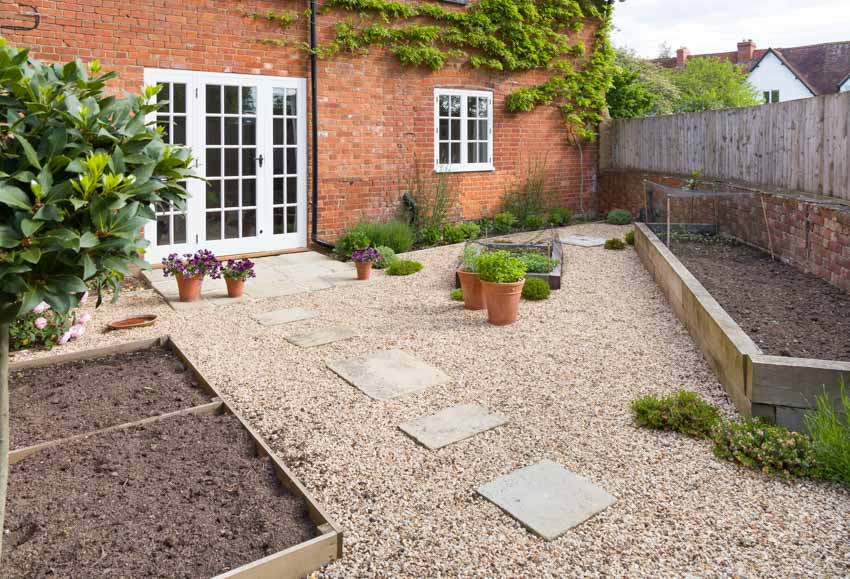
Gravel is extremely simple to put on lawns and offers a long-term solution. It is advisable to consult a gardener if you need gravel backyard ideas to consider. Lime is also an efficient method when solving how to fix a muddy yard. The majority of the time, professionals choose to use lime.
Examine Your Grade
Due to the frequent problem of poor grading, your yard may suffer pooling. You can quickly evaluate the grade of your grass using a yardstick and a tape measure. Hold the tape measure where the foundation meets the soil. Then take a 10-foot measurement away from the foundation using the tape measure.
Place the yardstick on top of the grass at the 10′ mark while keeping the tape measure level. Ideally, it should be at least 6′′ lower than your foundation. If it isn’t 6 inches or more, your yard’s grade has to be adjusted.
The Most Effective Short-term Solution For Muddy Yards
Applying straw, pine shavings, or organic mulch to a muddy yard is an excellent temporary remedy. These methods quickly dry up the yard, allowing you to operate on it with a car or foot. However, you will need to replace them with a long-term remedy since they won’t last.

